Step into a wedding in India and you’ll spot a blur of colors: crimson saris, white dhotis, golden turbans, even all-black modest robes. There’s not just one way to dress for religion here—it’s almost like every garment has its own history and reason. You might be surprised to know that religious clothing isn’t just about style. It talks. It tells stories about faith, modesty, caste, and even weather. Sometimes, you’ll see someone in a crisp white mundu (kerala’s answer to a sarong), someone else in a neat Sikh turban, and a third person with prayer beads looped into their scarf. But here’s the catch: many of these outfits might overlap with daily fashion. People wear them on streets, to temples, mosques, gurudwaras, and for big celebrations—sometimes for generations, sometimes just on special days.
Traditional Attire in Major Indian Religions
Hinduism is the oldest and most widely-followed religion in India, so its traditional clothing sets a lot of the visual tone. The sari probably comes to mind first—a six to nine yard stretch of fabric, wrapped in dozens of regional styles. For example, the Bengali sari is draped differently from the Maharashtrian one. A fun fact: the color of a sari matters. Red is big for brides, while white is a symbol of mourning or widowhood in many families. Among men, you’ll find the dhoti, a simple cotton cloth tied at the waist and passed between the legs, mostly worn during rituals, prayers, and festivals. If you’ve ever visited a bustling temple in Tamil Nadu or Orissa, you’ll often spot priests (pujaris) in spotless white dhotis with bright silk angavastrams (a kind of stole) slung over their shoulders.
For Muslim communities across India, you’ll encounter the classic salwar-kameez for women, usually with a dupatta (scarf) for modesty, often paired with a hijab or sometimes a burqa. A remarkable thing: in Hyderabad, older women still wear the khada dupatta, a heavily embroidered scarf, at weddings—a style that dates back to Mughal courts. Men typically don the kurta-pajama, or on Fridays and big festivals like Eid, a white sherwani with skullcap (taqiyah). That skullcap? It’s not mandatory, but wearing it for prayers is seen as respectful. Some Muslim men, especially elders and imams, will wear a long robe (jubba or sherwani) that marks religious authority.
Sikh dress pops with identity. The turban (or dastar) is non-negotiable for men who’ve taken Amrit (baptism) in Sikhism. This isn’t just a fashion quirk; it stands for dignity, equality, and connection to Guru traditions. Underneath the turban lies uncut hair (kesh), another sacred sign. Sikh women, too, wear a long scarf (chunni) over their heads, especially when in gurdwara. Punjabi suits—salwar kameez with vibrant dupattas—are everyday wear, but on major festival days, you might see men in special blue robes (bana) or even traditional weapons (kirpan).
Christian Indians come from dozens of regions with their own unique rituals. If you visit Goa on a Sunday, locals might turn up for church in western-style dresses, while in Kerala, Saint Thomas Christians (Syrian Christians) wear a cream-toned sari with a distinct gold border, called the kasavu or chatta-mundu. When it comes to clergy, priests and nuns wear the cassock or habit, just like in Europe. The cross pendant, often subtle, still quietly marks Christian faith. During Christmas and Easter, it’s common to see a mix of western suits, saris, and even lenghas (long skirts with short blouses for girls) depending on the family’s heritage.
Jains, known for their emphasis on non-violence and simplicity, often wear plain white unstitched garments when praying. Jain monks (and some laywomen) even cover their mouth with a white cloth (muhapatti) to avoid harming even the tiniest bugs. Parsi Zoroastrians, a tiny but culturally rich community, have their own stunning ritual attire, like the white jawa (for women) and the white muslin sudreh with kusti (sacred thread) around the waist for both sexes.
| Religion | Men's Attire | Women's Attire | Special Features |
|---|---|---|---|
| Hinduism | Dhoti, Kurta, Angavastram | Sari, Salwar Kameez | Color symbolism, region-specific drapes |
| Islam | Kurta, Pajama, Sherwani, Skullcap | Salwar Kameez, Hijab, Burqa | Modesty emphasis, embroidery for weddings |
| Sikhism | Turban, Bana, Kurta Pajama | Salwar Kameez, Chunni | Turban for Amritdhari Sikhs, Kirpan |
| Christianity | Shirts, Trousers, Cassock | Sari, Western Dress, Habit | White kasavu sari in Kerala, Cross pendant |
| Jainism | White unstitched cloth | White sari, Muhapatti | Non-violence garments, mouth cover |
| Zoroastrianism | Sudreh, Kusti, White garments | Jawa, Sudreh, Kusti | Muslin embroidery, sacred thread |
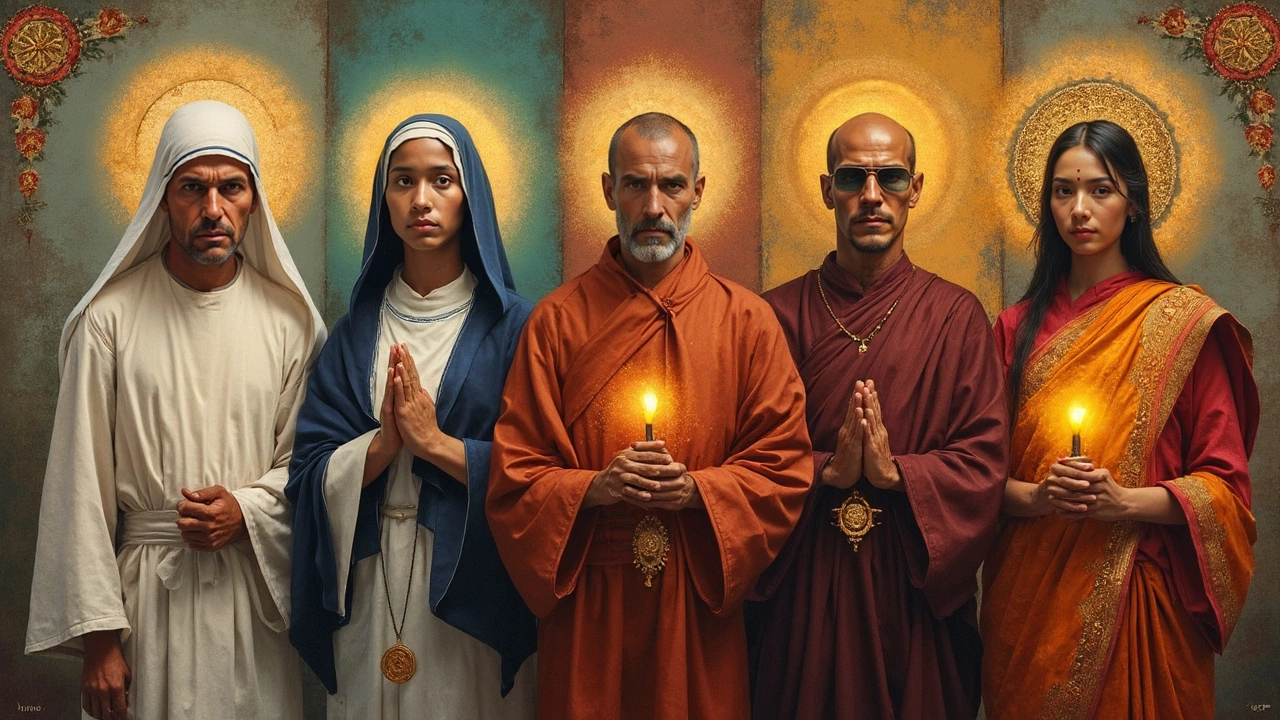
Symbolism and Meaning Behind Religious Clothing
Here’s where the layers get deeper. Every thread, color, and accessory can hold more meaning than meets the eye. Start with the humble saffron—the color crops up in Hindu robes and Sikh turbans for a reason. Saffron is packed with symbolism: it means renunciation, sacrifice, and a burning devotion to God. You’ll spot it on the robes of wandering sadhus and the flags fluttering outside temples. That’s not by accident; these visual cues help people identify who’s deeply religious, ascetic, or simply celebrating a big festival.
Modesty is the backbone of a lot of Indian religious clothing. Whether you’re looking at the full-body burqa worn by Muslim women, the chunni of Sikh and Hindu ladies, or the plain, long-fitting cassocks and habits used by Christian clergy, there’s a shared intent—keep distractions low, focus on prayer, and live by the faith’s guidelines for behavior. Yet, it isn’t all about covering up. For instance, the open drape of some sari styles show off handloom artistry, while the golden zari borders highlight prosperity, especially in ritual contexts like marriage or temple offerings.
Distinctive headgear can separate a priest from a worshipper, or even signal what branch of the faith someone belongs to. The Sikh turban is the clearest example, but Hindus also have their own symbols, like the elaborate pagri (turban) worn by priests in Rajasthan. Even the simple white skullcap is more than just cloth—it tells you someone’s prepping for Jummah prayers. On major holidays (think Diwali, Eid, Christmas), outfits often become even more ornate, decked with embroidery, bells, or special jewelry passed down through families. When Renzo (my son) was invited to a friend’s Gurudwara function, his friend's mom told us each item—the kara bracelet, the unstitched cloth, the scarf—stands for some Sikh value.
Most people probably don’t notice the way color rules work. White in Hinduism might mean mourning, but for Kerala’s Syrian Christians, a white-gold sari on a bride is a mark of joy. The key is context. In some Jain temples, absolute white means purity and a vow to nonviolence--almost a spiritual armor. Among Parsis, embroidery on the women’s sari isn’t just style; it’s a family legacy, often stitched by hand, with motifs meant to bring good luck or keep evil away. The same logic goes for jewelry; a mangalsutra (black-bead necklace) is unmistakable on married Hindu women, while crosses, rudraksha malas, and tasbih prayer beads quietly underline someone’s spiritual side.
Religious clothes also react to the weather. In Kashmir, Muslim women favor the phiran, a kind of loose robe, for warmth as well as modesty. In Rajasthan’s blazing sun, the multi-layered ghagra choli (skirt and blouse) teams up with a huge veil to shade faces from the dust and heat. At festivals, practicality gives way to drama—think of the sky-blue flowing turbans at Sikh Nagar Kirtans or the red-and-gold banarasi silks at a Hindu wedding. And at the other end, some sects go out of their way to be simple, even austere, to put humility first.
Sometimes, these outfits aren’t just for show; they signal rank or stage in religious life. Monks and priests wear different styles once they’re ordained. In the Muslim world, an imam’s cap or robe is instantly recognized in a crowd. Initiated Jains and Parsis have their own sacred garments—like the sacred thread ceremony (upanayana) for Hindu boys, who henceforth will wear a yajnopavita thread diagonally across the chest, tucked under the shirt but never removed. There’s a quiet dignity to these symbols—a reminder, nearly invisible in daily life, but always present.
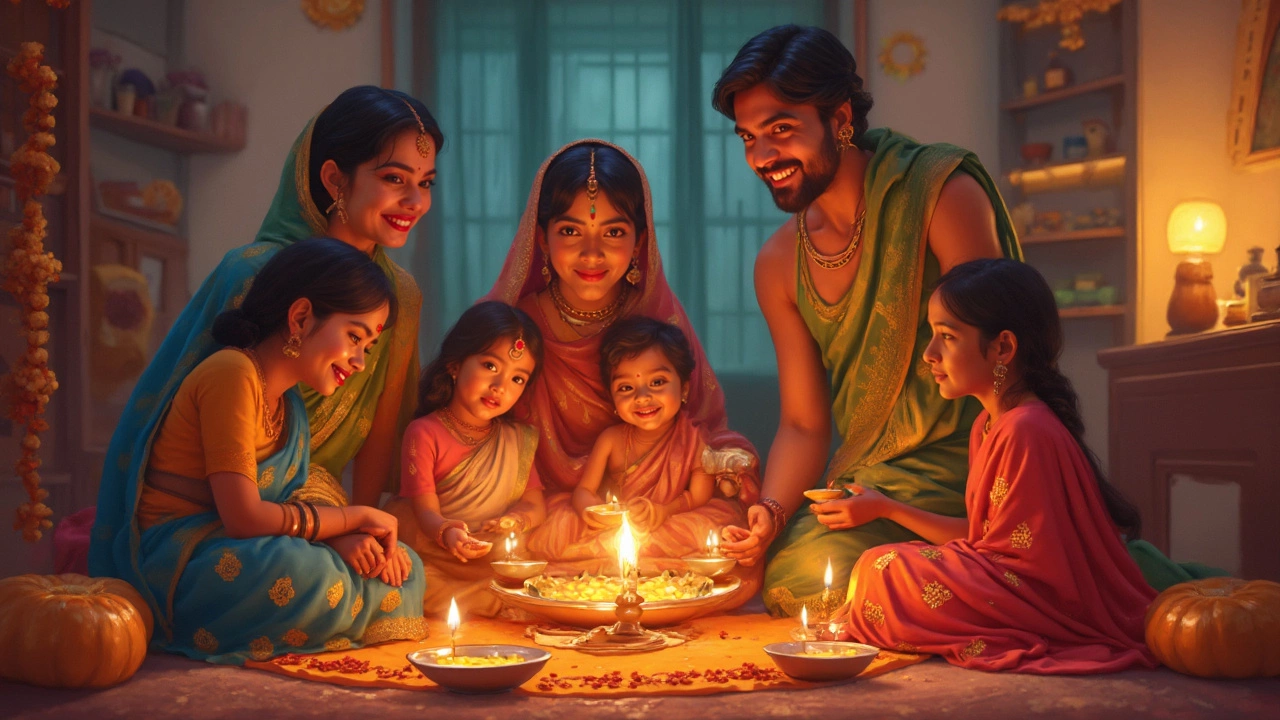
Religious Clothes in Festivals, Ceremonies, and Modern Life
If you were to crash a festival in India—Holi, Eid, Christmas, or Gurpurab—clothes would hit you with their sheer spectacle. Festivals aren’t just about prayers; they’re showcases for family heirlooms, regional trends, and creativity. When families gather for Diwali, Hindu women shine in bright silk saris, dusted with gold thread, while men often break out new kurtas. During Eid, even kids get fresh salwar suits and bangles. Sikh Baisakhi brings out ek-onkar-printed turbans and deep blue robes. And Christmas in Goa? There’s every color of lace dress, with a touch of Santa hats for kids.
Ceremonies can mean strict dress codes. Visit a South Indian wedding and you’ll see priests in angavastram and bare chest, married women in nine-yard saris, and even little girls in half-saris (pavadai). The ritual isn’t complete unless everyone’s dressed ‘right’. For Muslim weddings, the bride’s gharara and groom’s sherwani are works of art, hand embroidered over months. Buddhist ceremonies in Ladakh call for monks’ crimson robes and conical hats, each symbolizing a specific monastery or region. I once saw a Jain monk’s initiation, where the initiate literally gave up stitched clothes for an unstitched, seamless sheet—a stark, visual vow of ahimsa (nonviolence).
Schools in India often bend to religious tradition for special occasions. On Guru Nanak Jayanti, Sikh children tie their first patka (mini turban). On Christmas, schools might allow kids to wear their best frocks or sherwanis. And don’t be surprised if your office in Mumbai goes ‘traditional’ for major festivals—everyone dusts off their saris, kurtas, or even the odd ghagra for a cheerful change from the usual shirts and jeans. In the pandemic years, live-streamed weddings and ceremonies still showcased traditional dress, even if it meant borrowing mom’s old sari from the closet because shops were closed.
Modern fashion is sneaking into religious dress, but the roots are still strong. You’ll spot designer saris with neon prints at temple functions, or Christian brides in gowns that blend lace with kasavu borders. Hijabs and dupattas now come in trendy prints and materials, but the intention is the same—mixing devotion with daily comfort. Interestingly, Bollywood has a big role here. Aishwarya Rai’s wedding sari style or Shah Rukh Khan’s Eid attire set off real trends, sometimes bringing age-old ritual clothes back into the limelight. Teenagers experiment too—they’ll swap the formal turban for more laid-back versions, pick fusion saris, or wear symbolic jewelry on just festival days.
Tips for travelers: If you ever get an invite to a religious ceremony, do a quick check on “what’s appropriate.” Some Sikh Gurudwaras require head coverings for everyone (guys too, even if it’s just a handkerchief). Hindu temples might ask visitors to take off shoes and wear modest, covered clothes—no shorts or strappy tops. Muslim shrines might require long pants and a scarf. Usually, there’s signage, or someone will politely clue you in. Temples sometimes provide spare scarves at the gate, and buying a dupatta at the market is never a bad idea. For women, a long skirt and scarf will get you into almost any sacred space. If in doubt, just copy what local families are doing.
So yeah, India’s religious dresses aren’t just cool costumes—they act like living history books. Each village, each family, has its twist on the rules, and wearing these clothes connects people not just to their gods but to ancestors, neighbors, and the fast-changing world around them. Next time you pass by little kids in temple silks or men tying turbans at a festival, you’ll know you’re looking at much more than fashion. You’re seeing the country’s spirit, woven right into what people wear.
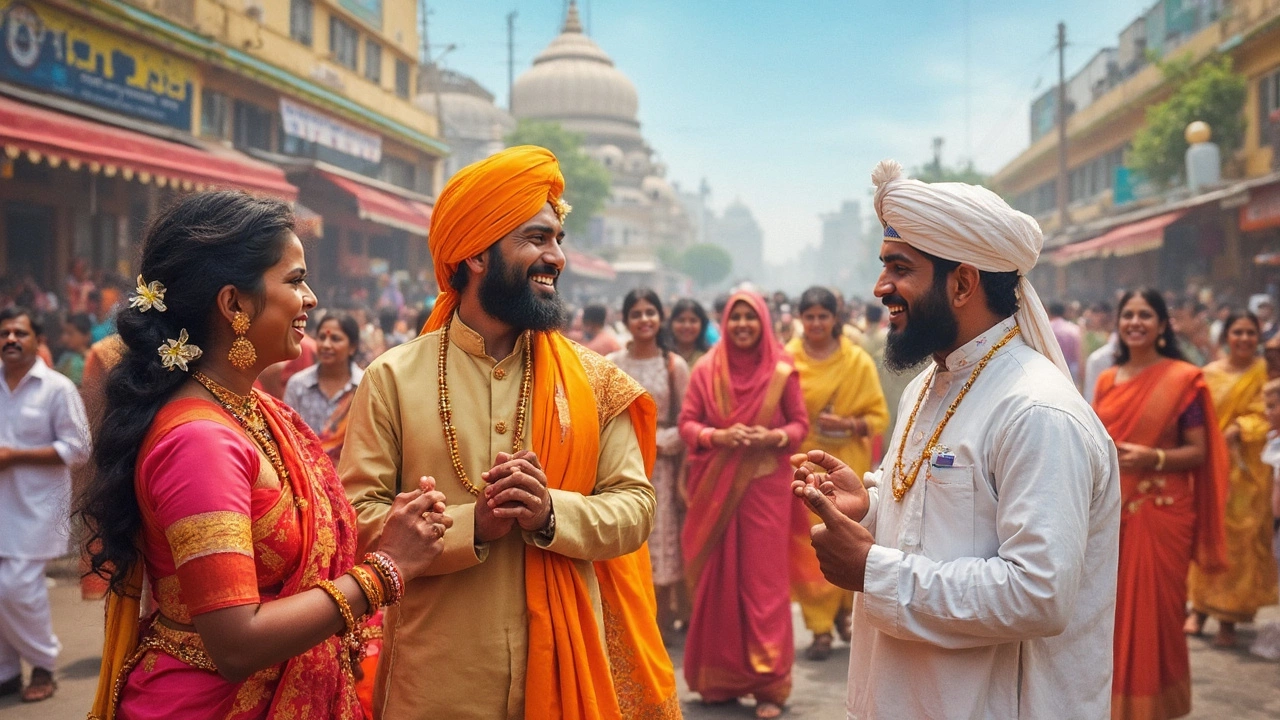
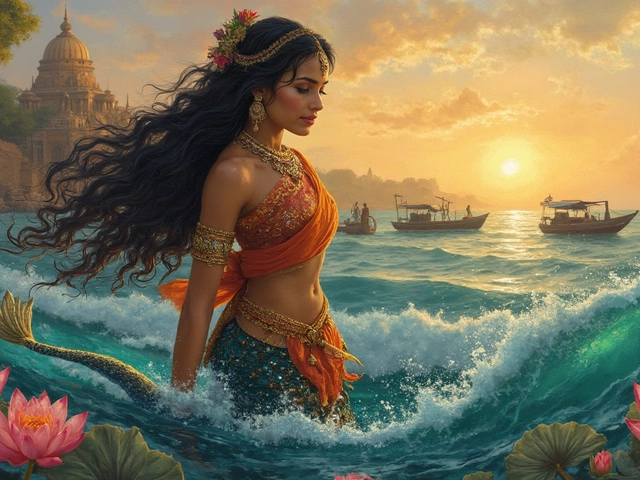
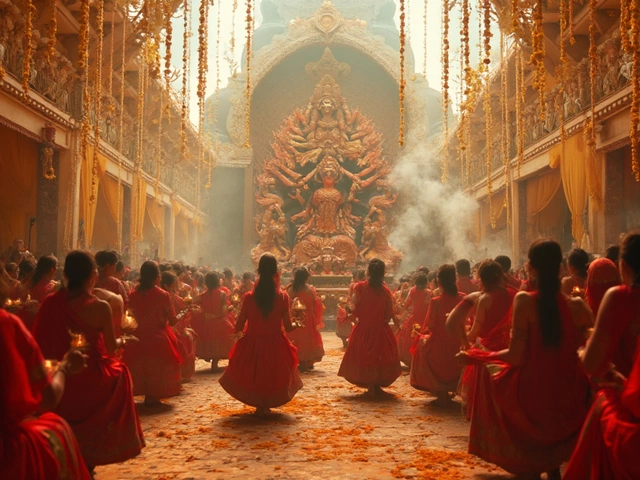
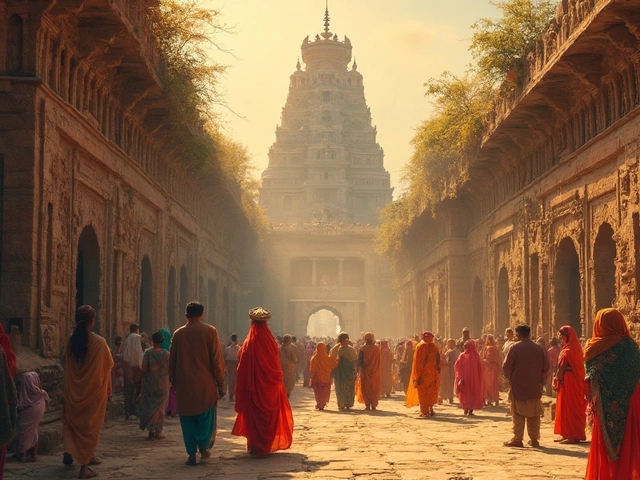
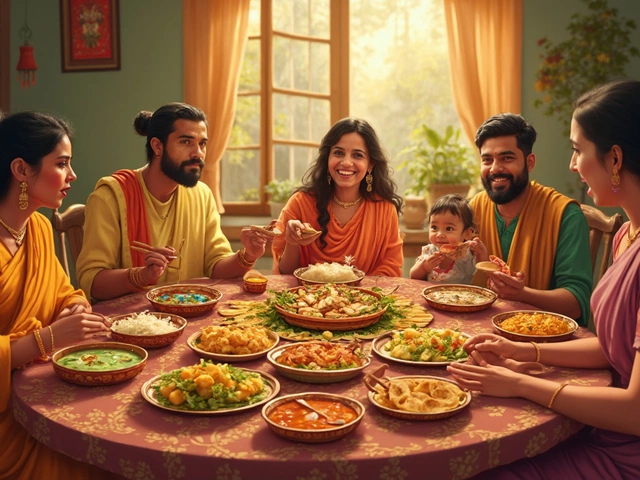
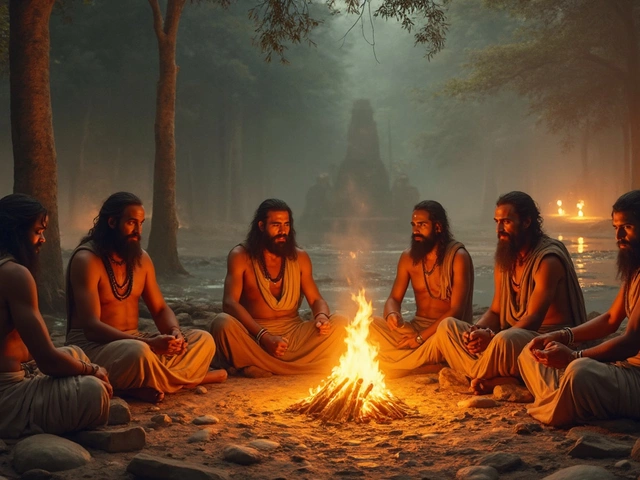
Write a comment